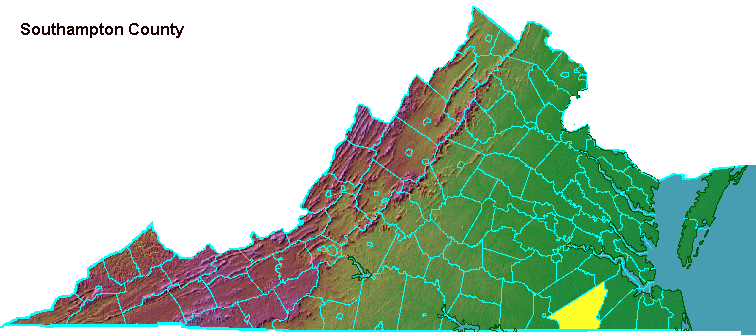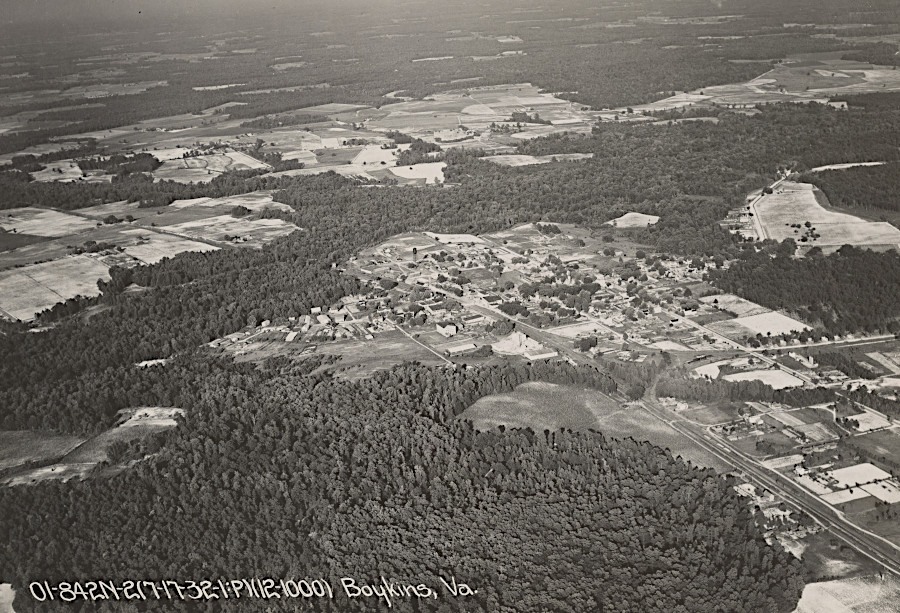

Southampton County was carved out of Isle of Wight County in 1749, creating a new county west of the Blackwater River. Presumably it was named for the borough of Southampton in England, though the name might have been chosen in honor of Henry Wriothesly, third Earl of Southampton. He was a leader of the Virginia Company and a patron of Shakespeare. Early English colonists named the waters at the mouth of the James, Nansemond, Elizabeth, and Hampton rivers as the "Earl of Southampton's Roadstead." The name of the roadstead, or place where ships could anchor with some protection from storms, was soon shortened to "Hampton Roads."1
A slice of Nansemond County (now the City of Suffolk) was added in 1786. The county was reduced in size when Franklin became an independent city in 1961, and twice more when Franklin expanded its boundaries by annexing more of Southampton County in 1986 and in 1996.2
The county seat was known originally as the Town at the Courthouse. The name was changed to Jerusalem in 1791, perhaps reflecting a desire to associate the community with a historical name in the Bible. When the Atlantic and Danville Railroad reached Jerusalem in 1888, the named was changed again to Courtland. A member of the Southampton County Historical Society suggests the change occurred because the railroad made shopping convenient in Norfolk, but shopkeepers would refer to "those Arabs from Jerusalem."3

Boykins in 1932
Source: National Archives, Virginia - Blue Ridge Mountains through Cape Charles